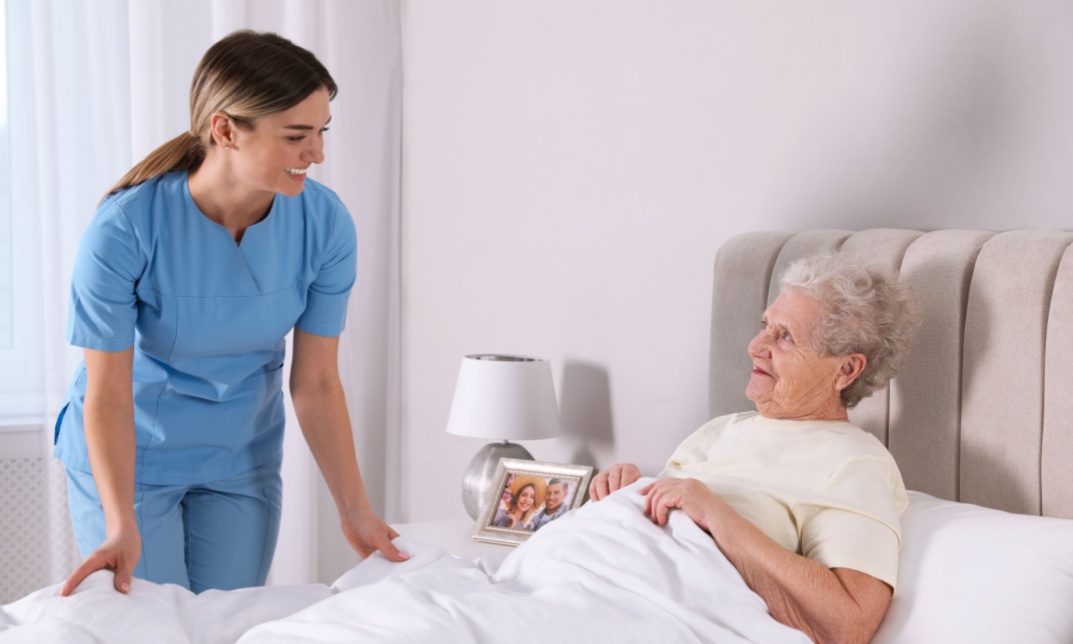What is safeguarding and prevent, and why does it really matter in schools? Well, it’s all about keeping every child safe and happy. In England, schools must follow Keeping Children Safe in Education (KCSIE) 2025 and the Prevent duty. These rules help protect children from harm — whether it happens in real life or online.
Every teacher and staff member gets safeguarding training when they start and again each year, so they know how to spot when something’s not right. And when there’s a worry, they report it to the Designated Safeguarding Lead (DSL). This way, help reaches the child fast, and no concern gets missed.
So, in this guide, we’ll take a closer look at how schools keep pupils safe, what staff need to do every day, and exactly how the DSL supports children when concerns arise.
What Is Safeguarding and Prevent in the UK?
“Safeguarding” in UK Schools
Safeguarding is all about keeping children safe and looking after their well-being. In simple terms, it means protecting them from harm, abuse, or neglect — whether in real life or online.
Also, safeguarding is about stopping anything that could hurt a child’s health or development. Schools make sure children get the care and support they need to grow, learn, and feel happy.
Most importantly, it’s about acting early. By noticing small problems quickly, staff can help children before things get worse. These rules apply to all children under 18, so every pupil in a UK school is looked after and protected.
“Prevent Duty” in Education
The Prevent duty is about protecting children from being drawn into harmful ideas or extremism. Schools and childcare settings must watch for risks and act quickly to prevent problems from growing.
For example, if a child seems influenced by dangerous ideas, staff can refer them to the Channel programme — a friendly, voluntary support system that helps the child make safe choices. It’s not about punishment, but care and protection.
Importantly, following the Prevent duty is a legal responsibility for all schools and registered childcare providers in England. By doing so, schools make sure children can learn, grow, and feel safe, both in class and online.
Safeguarding vs Child Protection vs Prevent: Understanding the Differences
Safeguarding
Safeguarding is like the everyday shield around every child at school. It’s about keeping children safe, happy, and supported all the time — in class, online, and around school. Basically, it helps them grow up healthy, confident, and cared for.
Child Protection
Child protection comes into play when a child is in real danger. This is when staff take action quickly, for example by making referrals under section 47 to children’s social care. The goal is to make sure the child gets help fast and stays safe.
Prevent
Prevent focuses on the risk of radicalisation. Schools watch for warning signs, give support, and if needed, refer the child to the Channel programme, which offers extra guidance and care. This helps children make safe choices and stay protected from harmful influences.
Quick Comparison
In short:
- Safeguarding = everyday care and safety for all pupils.
- Child protection = urgent help when a child is at serious risk.
- Prevention = keeping children safe from extremist ideas.
Together, these three layers make sure every child feels safe, supported, and cared for, no matter what.
Who Must Follow Safeguarding and Prevent?
When it comes to safeguarding and preventing, everyone in education has a role to play. This includes:
- All schools in England – including maintained schools, academies, and independent schools.
- Further education and sixth-form colleges – older students need protection too.
- Alternative provision and PRUs – making sure children in special settings are safe.
- Early years settings – nurseries and childcare providers also follow the rules.
In short, all these settings must follow Keeping Children Safe in Education (KCSIE 2025) and the Prevent duty. That means they all have clear safeguarding responsibilities, keep children safe every day, and act quickly if there’s a concern.
What Are Schools Legally Required to Do?
Schools have a big responsibility to keep children safe, and there are some key things they must do:
- Keep policies up to date – rules about safeguarding should be clear, simple, and current.
- Check for risks – look for anything that could hurt children and fix it quickly.
- Hire safely – check all staff carefully using DBS, references, and past work history.
- Train staff well – give induction training when they start and refresher training at least once a year.
- Make reporting easy – everyone should know how to tell the Designated Safeguarding Lead (DSL) if something seems wrong.
- Write things down – keep notes about actions and decisions so nothing is forgotten.
By following these steps, schools create a safe and caring environment where children are protected every day, and staff always know how to act if there’s a problem.
What Is the Designated Safeguarding Lead (DSL)?
The Designated Safeguarding Lead (DSL) is the key person in a school who makes sure every child is safe. They act quickly if there’s a worry and guide staff on what to do. Think of the DSL as the school’s safeguarding hero — someone everyone can turn to when a child might need extra protection or support.
Here’s what the DSL does:
- Handle concerns and referrals – tell the right people if a child might be at risk.
- Work with other services – like social workers, police, or health professionals.
- Share information safely – keep sensitive details private, but share with people who need to know.
- Guide and support staff – help teachers and staff understand how to keep children safe.
- Keep clear records – write down concerns so nothing is forgotten.
During school hours, the DSL or a trained deputy must always be available. Deputies are trained to the same level, so children are always protected, even if the DSL is not around.
What Training Do Staff Need (and How Often)?
Keeping children safe is a team effort, and good training helps staff feel confident and ready. It shows them how to spot warning signs, act quickly, and protect every pupil.
Here’s what staff usually learn:
- Safeguarding training when they start – everyone gets the basics at induction.
- Refresher training each year – a quick update so no one forgets important safety steps.
- Online safety training – understanding risks online and using filters and monitoring tools properly.
- Special training for certain roles – like the DSL or staff with extra safeguarding responsibilities.
Plus, training follows advice from local safeguarding partners, so schools know they are doing the right thing for their community. With regular, clear training, staff can spot problems early and act with confidence, keeping children safe every day.
What are the signs of abuse or neglect that staff should notice?
Staff play a big role in spotting when a child might be in trouble. It’s important to notice changes in behaviour or appearance. Here are the main signs:
- Physical signs – unexplained injuries, bruises, or burns.
- Emotional signs – withdrawn behaviour, low self-esteem, or unusual fearfulness.
- Sexual signs – knowing things that are not appropriate for their age.
- Neglect signs – poor hygiene, dirty clothes, persistent hunger or untreated medical needs.
Also, remember to consider peer-on-peer harm and risks online. Sometimes harm happens between children or through social media and messaging apps.
By noticing these signs early, staff can act quickly to protect children and get them the help they need.
How Do You Report a Safeguarding Concern in School?
If you think a child might be in danger, don’t wait — act straight away. First, notice the signs and trust your instincts. Next, write down what happened — keep it factual, simple and include the date. Then, tell the DSL immediately.
Never promise a child you’ll keep it a secret, because their safety comes first. The DSL will make sure the child gets help, contacting children’s social care or the police if needed. By acting quickly, you can protect the child and make a real difference.
How Does Prevent Work Day to Day in Schools?
Every day, schools take small but important steps to keep children safe from being drawn into extremist ideas. First, they do a risk check to see if anything might be dangerous. Then, staff stay alert and watch for warning signs. Also, lessons in RSHE, citizenship, and digital safety help children make safe choices and think for themselves. Plus, all visitors and speakers are carefully checked before coming in. If a risk is spotted, schools make a Prevent referral, and the Channel programme offers extra support to guide and protect the child.
Online Safety: What Must Schools Put in Place?
In today’s world, keeping kids safe online matters just as much as keeping them safe in the classroom. First, everyone needs to know about their role and what they are responsible for. Then, schools make sure their filters and monitoring tools work properly to block harmful content and spot any risks early.
Also, systems should match KCSIE online safety expectations, and staff must be trained regularly to handle new online challenges. By staying alert and organised, schools help children learn safely online and protect them from harm.
Safer Recruitment: How Do Schools Keep Hiring Safe?
Hiring the right staff is really important to keep children safe. First, schools keep a Single Central Record (SCR) that shows all checks, including enhanced DBS checks when needed. Then, they check each person’s identity, take references and ask about any gaps in work history. Also, keeping the SCR is a legal requirement under KCSIE 2025, so schools always have a clear record. By doing all this, schools make sure staff are trusted, responsible, and ready to protect children every day.
Record-Keeping and Information Sharing: What’s Good Practice?
Good record-keeping and sharing information properly are super important for keeping children safe.
- Keep child protection (CP) records clear, concise, and easy to understand.
- Store records securely, ensuring only authorised staff can access them.
- When a child moves to a new school, transfer their CP files within 5 school days.
- Share information only with those who need it, following UK GDPR and KCSIE guidelines.
By following these steps, schools ensure children receive timely and safe support.
Working With Parents and External Agencies
Keeping children safe works best when schools, parents, and other services work together. First, use early help when a child needs support before things worsen. Then, stay in touch with teams like MASH, LADO, social care, police and health services whenever needed. Also, always communicate respectfully and quickly, so everyone knows what’s happening. By doing this, schools follow KCSIE guidance and make sure safeguarding is all about the child — practical, caring, and effective.
How Are Visitors, Volunteers and Contractors Managed?
Keeping children safe also means ensuring that anyone entering school is properly checked and supervised.
Here’s how schools do it:
- Check ID – make sure every visitor, volunteer, or contractor is who they say they are.
- Decide supervision – the level of supervision depends on their role and vetting checks.
- Give a short induction – explain who the DSL is and how to report any concerns.
- Follow school rules – everyone must stick to site rules while on school grounds.
- Record in the SCR – note details in the Single Central Record where needed.
By following these steps, schools make sure everyone in the building helps keep children safe, while visitors can carry out their work confidently.
Curriculum: How Do RSHE and Citizenship Support Safeguarding & Prevent?
Schools use RSHE (Relationships, Sex, and Health Education) and citizenship lessons to help children stay safe and make good choices. Here’s how:
- Build resilience – help children cope with problems and feel confident.
- Develop critical thinking – teach them to spot risky situations or harmful ideas.
- Promote respectful relationships – encourage kindness, empathy and healthy friendships.
- Teach digital literacy – show safe ways to use the internet and spot online dangers.
By doing this, schools make sure children grow aware, confident, and ready to protect themselves every day.
Ofsted: What Inspectors Look For on Safeguarding and Prevent
Ofsted stands for the Office for Standards in Education, Children’s Services and Skills. When Ofsted visits, they want to see how well a school keeps children safe every day. First, they look at the school culture – is safeguarding really a priority for everyone?
Then, they check staff confidence – do staff know what to do and feel ready to act? Next, they review how concerns are handled to make sure nothing is missed. Also, they see if policies actually work in real life, not just on paper. Even though reporting rules are changing, safeguarding is still a limiting judgment which can affect the school’s overall rating if it’s not strong.
Common Pitfalls Schools Should Avoid
Even the best schools can make mistakes when it comes to safeguarding. Here are some common pitfalls to watch out for:
- Old or out-of-date policies – rules need refreshing to match KCSIE 2025.
- Slow or messy record-keeping – notes about concerns must be clear, timely, and accurate.
- Confusing DSL routes – staff should always know exactly who to tell.
- Gaps in staff training – regular updates keep everyone confident and ready.
- Weak online-safety systems – filtering and monitoring must actually protect children.
- Incomplete Single Central Record (SCR) – every staff check should be fully recorded.
By avoiding these pitfalls, schools can create a safer, stronger environment where children thrive and staff know exactly what to do.
FAQs
1. What is Prevent and safeguarding?
Prevention helps stop children from being drawn into extremism, while safeguarding protects them from harm, neglect, or abuse.
2. How do you explain safeguarding?
Safeguarding is making sure children are safe, healthy, and supported to grow up well.
3. What is the meaning of safeguarding prevention?
It means taking steps every day to stop harm before it happens and keep children safe.
4. What is a Prevent?
Prevention is a legal duty in schools to identify risks of radicalisation and take action early.
5. Which is the meaning of Prevent?
It means helping children avoid being drawn into extremist ideas and referring them to support if needed.
6. What are the three stages of Prevent?
The three stages are identify risks – spot signs a child may be at risk; support – help the child safely and offer guidance; and refer to Channel – involve a multi-agency programme for extra support.
Final Thoughts: Building a Safe, Vigilant School Culture
Understanding what is safeguarding and prevent means knowing that keeping children safe is something we do every day. It’s about noticing small signs, acting quickly and making sure help is always there when it’s needed.
A strong safeguarding culture begins with confident staff, clear and easy-to-follow rules, and simple ways to report worries. Plus, it grows when schools teach children to think for themselves, make safe choices, and speak up if something doesn’t feel right.
In the end, safeguarding and Prevent are more than rules — they are about building a caring school community. When everyone works together, children feel safe, valued, and supported, ready to learn and grow happily.
To take your skills further, enhance your safeguarding knowledge with the Level 2 Certificate in Understanding Safeguarding and Prevent at the School of Health Care.




